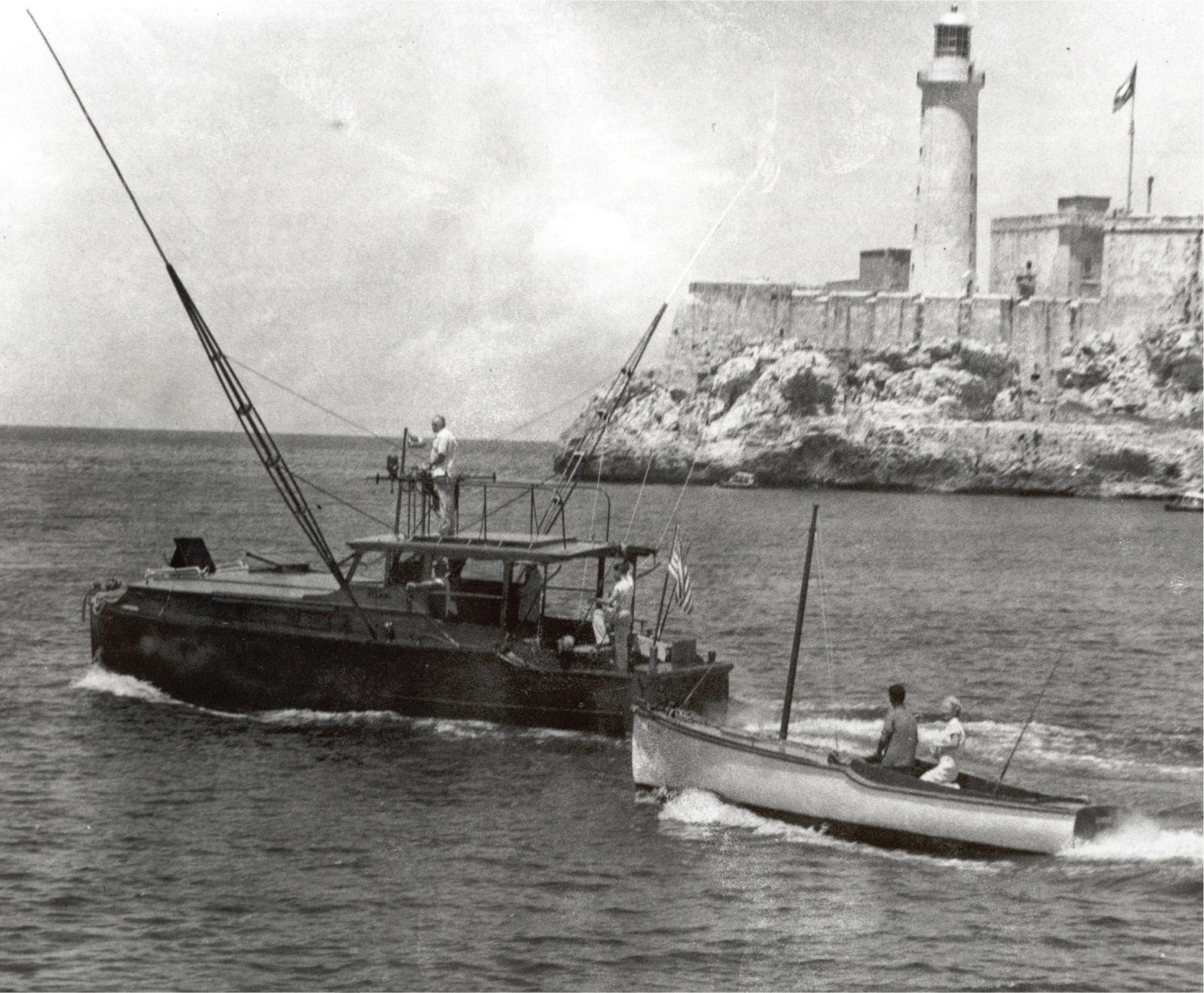THE ENEMY IN THE MACHINE
Editor’s Note: During World War II, Ernest Hemingway chose to start his own personal war on the wolf packs, German U-boats prowling the shipping lanes around his beloved adopted home of Cuba.
Excerpted from The Hemingway Patrols by Terry Mort. Copyright © 2009 by Terry Mort. Published by Scribner, a Division of Simon & Schuster, Inc. Reprinted with permission.

Pilar, shown at left, is a 38-foot Wheeler Playmate.
Handling Pilar, or merely being aboard her, was a pleasure for Hemingway, as it would be for any blue-water sailor, except when the weather was foul or threatening. Pilar had a wooden hull, decks, and bulkheads—forgiving material that accommodated itself to the motions of the sea, smooth to the touch and comforting physically and aesthetically. And she had an open-air conning station on the flying bridge, a place to savor the sights and smells of the sea, a place where, barefoot, Hemingway could synchronize his body with the movement of the boat and let his imagination run loose for a while as he simultaneously kept his eye out for seabirds diving on frantic baitfish that could perhaps be fleeing from a marlin. Pilar’s outriggers were like antennae on some delicate aquatic insect, her wake foamy white against the blues and greens of the Gulf. Seen from afar or up close, she was a pretty thing. Small wonder that Hemingway named her after a lover.
By contrast, U-boats did not have names, only numbers.1 (Some in- dividualized themselves with designs painted on the conning tower, much like the devices on a knight’s shield.) Nor did they have much in the way of creature or aesthetic comforts. A warship of any kind, surface ship or submarine, is first and foremost a machine. Seen from a distance, it is easy to romanticize the beauty of a Navy ship or submarine cutting a creamy bow wave, an elegant haze-gray silhouette—and no sailor would disagree with that image. But any sailor would also know that on board the ship, within the ship, the human element largely gives way to the requirements of the ship itself, the machine—the endless miles of cables overhead, and vents and steel bulkheads and steel decks, heavy watertight doors and hatches that seal off men working in a magazine or gun turret or engine room, where the smell of fuel oil and the myriad valves and gauges, the oppressive heat and the deafening sound of the powerplant, make life uncomfortable on the best of days. Just about the only soft thing on a warship is the sailor’s bunk, and he will tell you he doesn’t get to spend nearly enough time there. At least on a surface ship a sailor can enjoy the sea breezes on weather decks. Not so in a submarine, for the main decks, narrow and slippery, are dangerous places to work, while the confined area of the conning tower leaves little room for anyone other than the men standing watch.
The workhorse of the German submarine fleet was the Type VII. During the war 568 of this type of boat were commissioned. While boats in this class varied slightly, their general characteristics were basically the same. Each boat carried fourteen torpedoes and could fire them from five tubes—four in the bow, one in the stern. On deck was an 88 mm gun, for which the boat carried 220 rounds of ammunition in
You’re reading a preview, subscribe to read more.
Start your free 30 days





